'A coffee machine for those who enjoy the ritual of bean-to-cup' – I put the Sage Barista Express to the test
Our Sage The Barista Express BES875UK Espresso Coffee Machine review puts the brand's most affordable bean-to-cup machine through its paces to see if its performance can live up to its stylish good looks
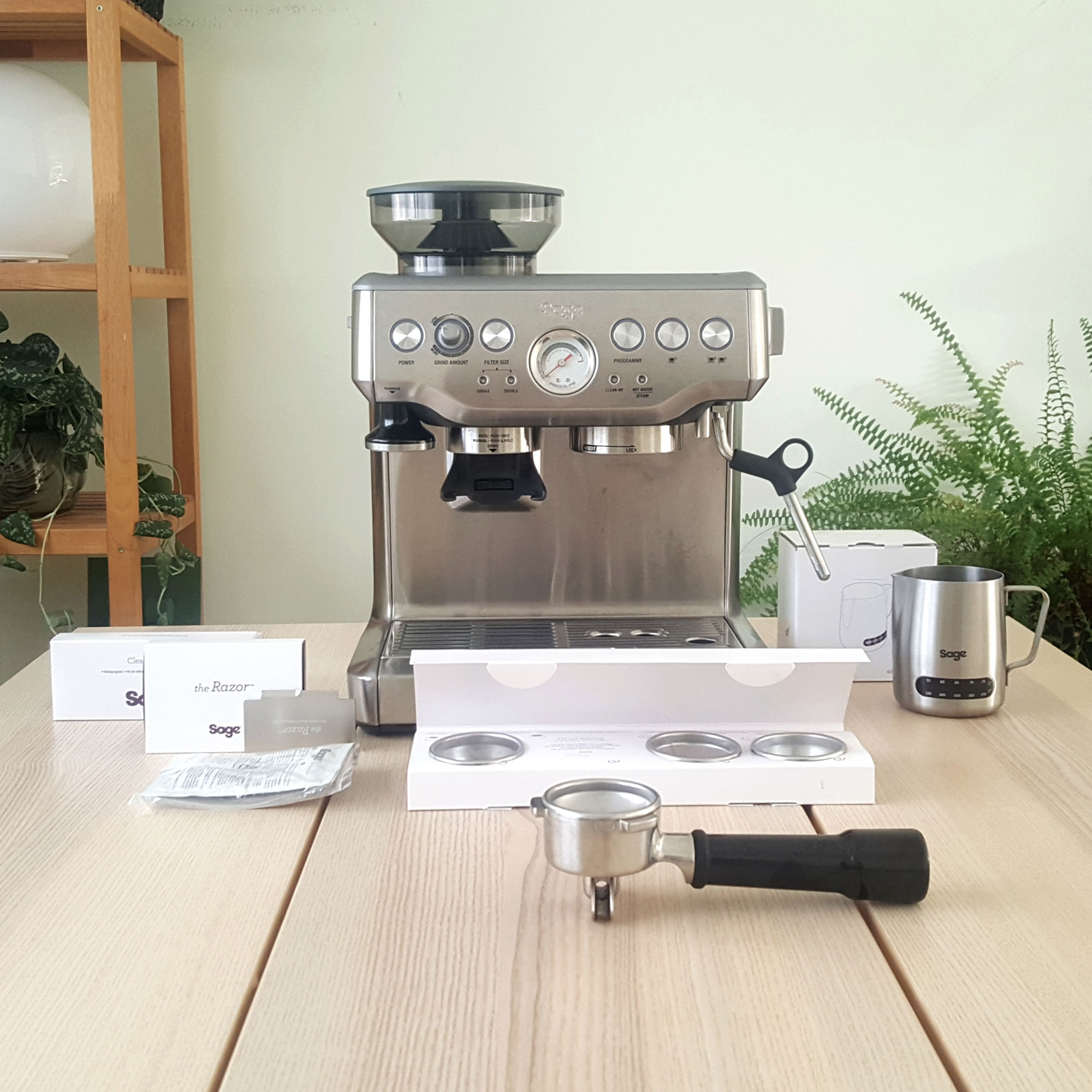
A super stylish 'hands on' bean-to-cup coffee machine with plenty of useful accessories to help you create the perfect brew.
-
+
Looks super stylish
-
+
Makes great coffee with excellent crema
-
+
Customisable settings for the coffee aficionado
-
+
Built-in steam wand
-
+
Lots of useful accessories
-
-
Noisy
-
-
A little messy
-
-
Filter baskets awkward to remove from portafilter
-
-
Automatic dosing could be easier
Why you can trust Ideal Home

Quick Menu
Our Sage The Barista Express BES875UK Espresso Coffee Machine review puts the brand's most affordable bean-to-cup coffee machine to the test.
The Barista Express offers automatic grinding and dosing with an integrated conical burr grinder that features 16 grind settings, a 54mm stainless steel portafilter that comes equipped with single and dual and wall filters so you can use either pre-ground or unground coffee beans, and low-pressure pre-infusion followed by 9 bar extraction delivered via a 15 bar Italian pump.
Sage states the Barista's Thermocoil heating system with PID temperature control also delivers water at exactly 93°c for a 'perfectly balanced flavour', and it comes with a built-in steam wand for creating smooth microfoamed milk.
However, despite being the brand's entry-level bean-to-cup machine, the Barista Express certainly isn't cheap, so I was keen to put it to the test in my kitchen to see if it was worth the investment.
Sage The Barista Express BES875UK Espresso Coffee Machine review
Specifications
- Dimensions: H40 x W33 x D31cm
- Weight: 10.6kg
- Capacity: 250g bean hopper, 2L water tank
- Energy use: 1700W
- Included: portafilter, tamper, stainless steel milk jug, single and double shot dual wall filter baskets for use with pre-ground coffee, single and double shot single wall filter baskets for use with whole coffee beans, 'The Razor' for precision trimming your ground dose, a cleaning kit, and a pack of descaler
- Grind settings: 16
- Options: Single or double shot, hot water, milk frother
- Adjustable features: dose volume, shot volume, extraction water temperature, grinder burr adjustment
- Colours: stainless steel/black
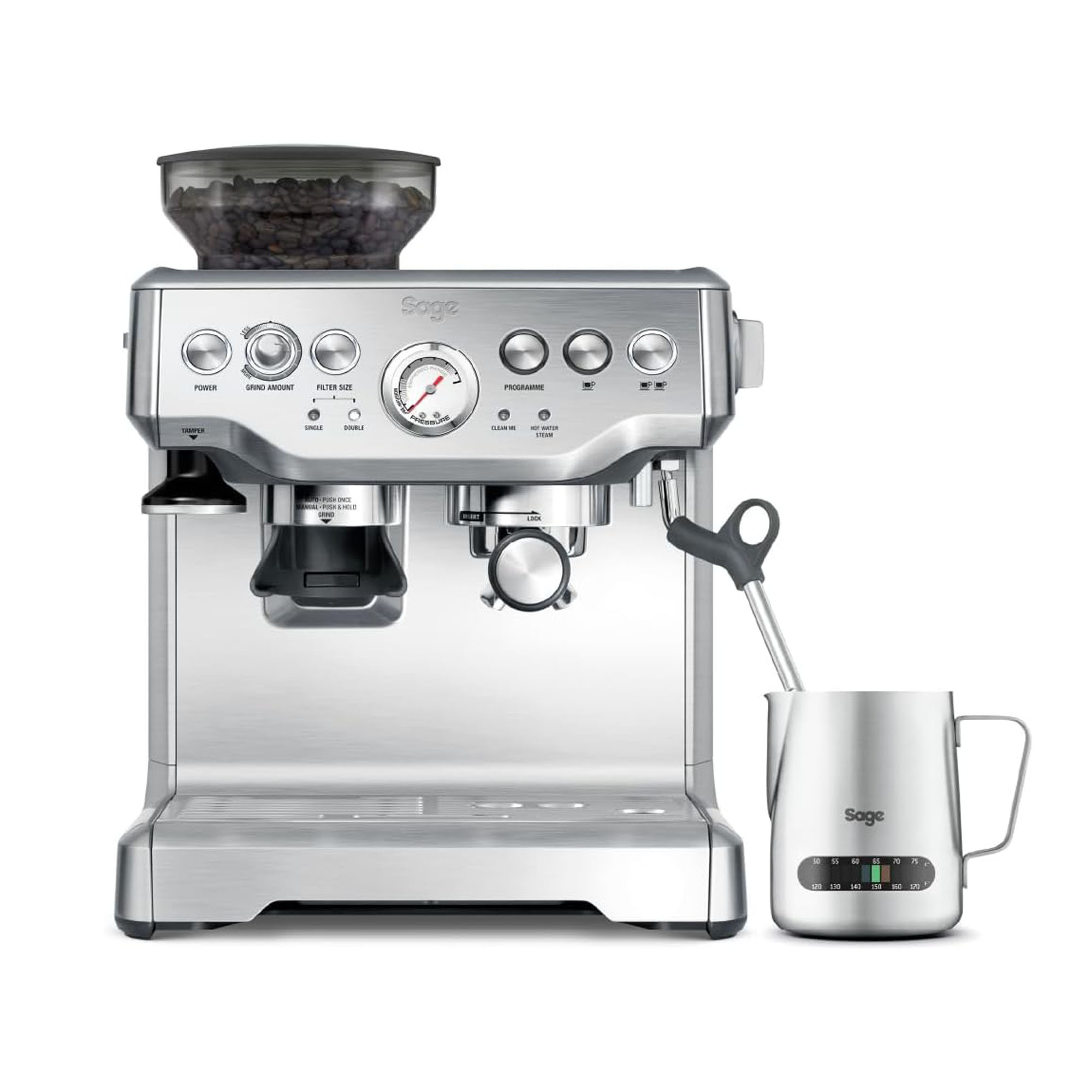

How I tested

I'm Amy, one of the Ideal Home team's Ecommerce Editors. My job involves putting all manner of products through their paces to find the best recommendations for our readers, and in this case, that meant putting the Sage The Barista Express BES875UK Espresso Coffee Machine to the test. I tested the Barista Express in my own kitchen over the course of a month to see if it could deliver the perfect brew.
Unboxing and first impressions
If you haven't owned a bean-to-cup coffee machine before, it's worth preparing yourself for the fact these appliances are weighty.
The Sage The Barista Express weighs in at 10.6kg, and that's without all the accessories that are included in the box. So if possible, it's worth having two people around on delivery day to safely get the box over the doorstep and into the kitchen.
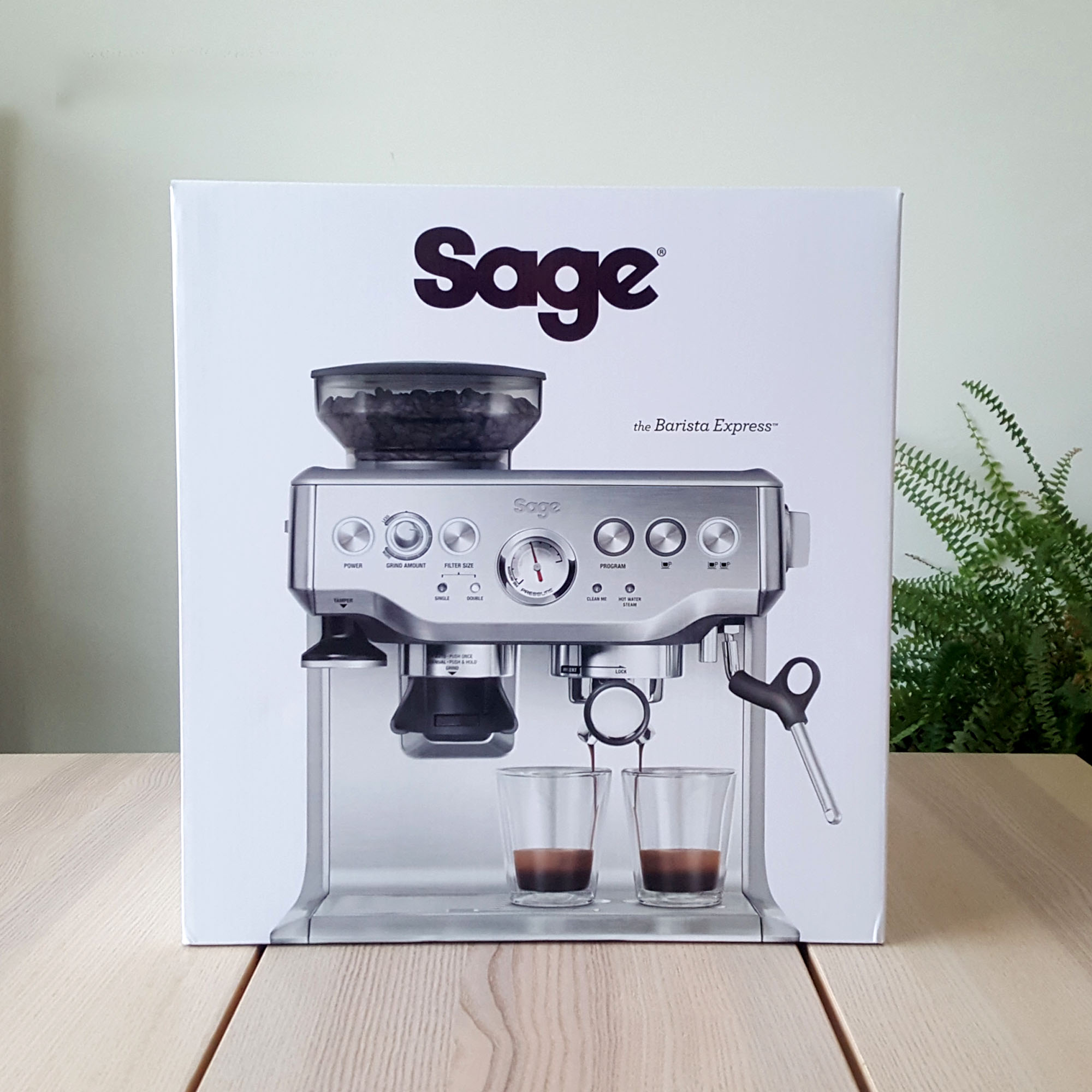
On unboxing, it was disappointing to see that Sage is still opting for non-biodegradable polystyrene packaging rather than a recyclable option, but the Barista Express itself certainly didn't disappoint.
I'd previously tested the Breville Barista Signature Espresso Machine, which is a sleek and minimal espresso machine with a slightly clinical-feeling digital display.
In comparison the Sage Barista Express offers a more traditional design. There's a classic pressure gauge that takes centre stage on the front of the machine, and a curvaceous stainless steel body that instantly makes this feel like a premium product.
When I picture a bean-to-cup coffee machine in my mind's eye, the Sage Barista Express is exactly what I envision, and it makes a very aesthetically-pleasing addition to any kitchen work surface.

Set-up
I may have become instantly enamoured with the Sage Barista Express' swoonworthy good looks, but now it was time to find out if it could also win me over with its bean-to-cup performance.
Once you've shimmied the coffee machine out of the box, there's a little assembly to do before you can start grinding and brewing.
First, you need to install the water filter into the water tank, and then slide the water tank into the slots at the back of the machine. Then it's just adding the hopper onto the top of the coffee machine, all of which are easy to do.
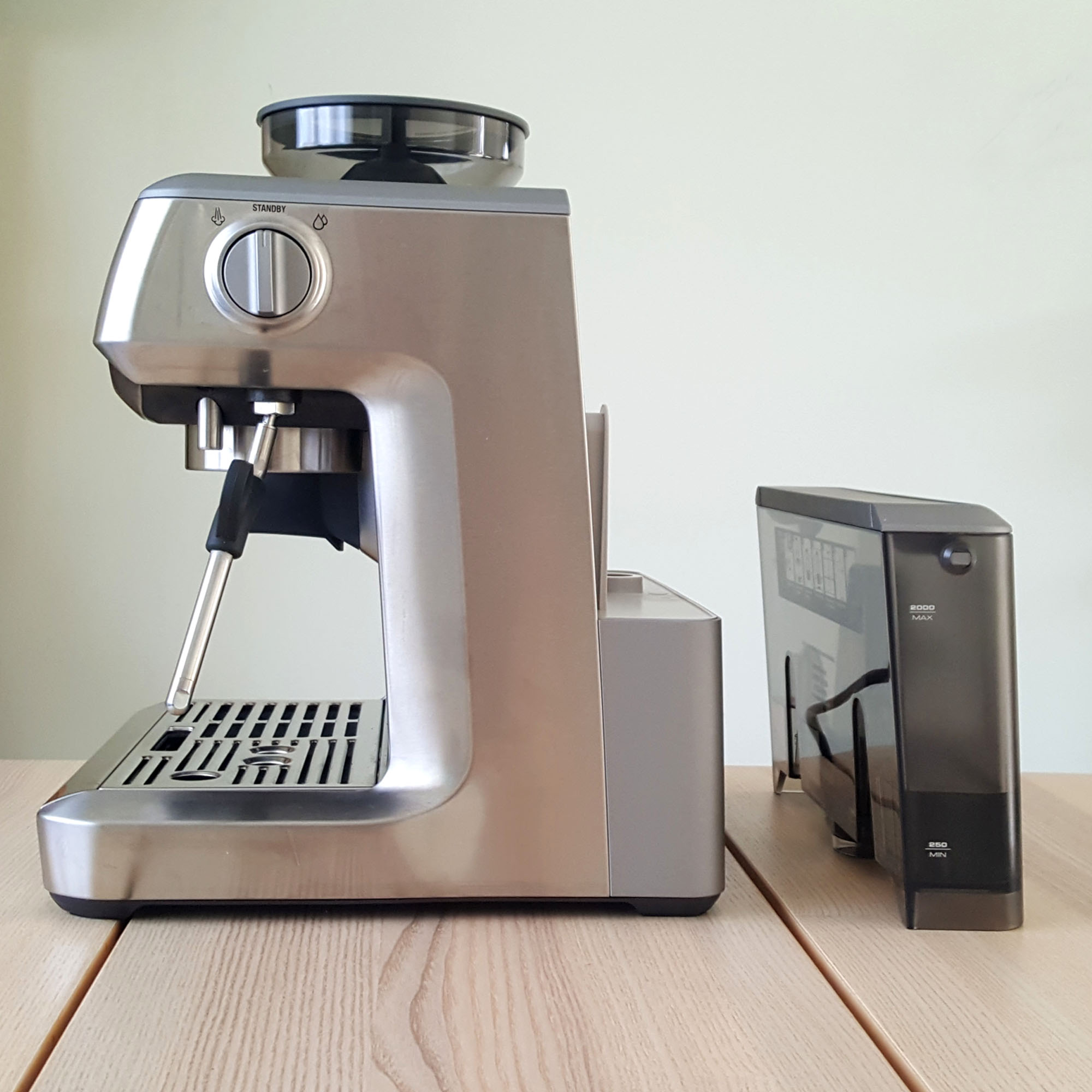
Once these two essentials are in place you need to run water and steam through the system a few times to make sure the Barista Express is ready for use. The instructions for this procedure are all well explained in the instruction manual.
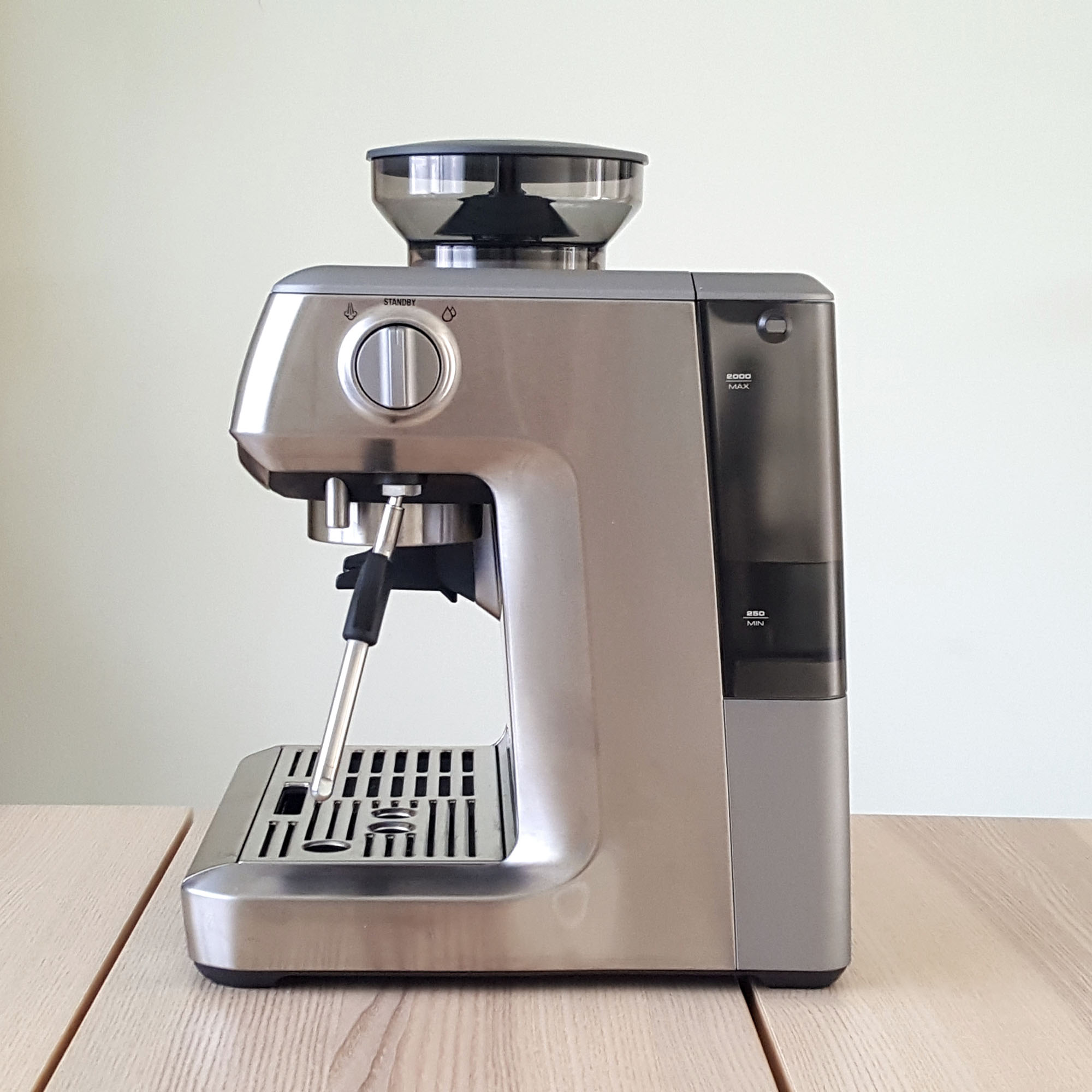
Next up, it's figuring out what's inside the many accessory boxes that accompany the Barista Express.
All in all, alongside the coffee machine itself, you get a snazzy milk jug with a temperature indicator on the side, single and double shot dual wall filter baskets for use with pre-ground coffee, single and double shot single wall filter baskets for use with whole coffee beans, the portafilter, 'The Razor' for precision trimming your ground dose, a cleaning kit, and a pack of descaler.
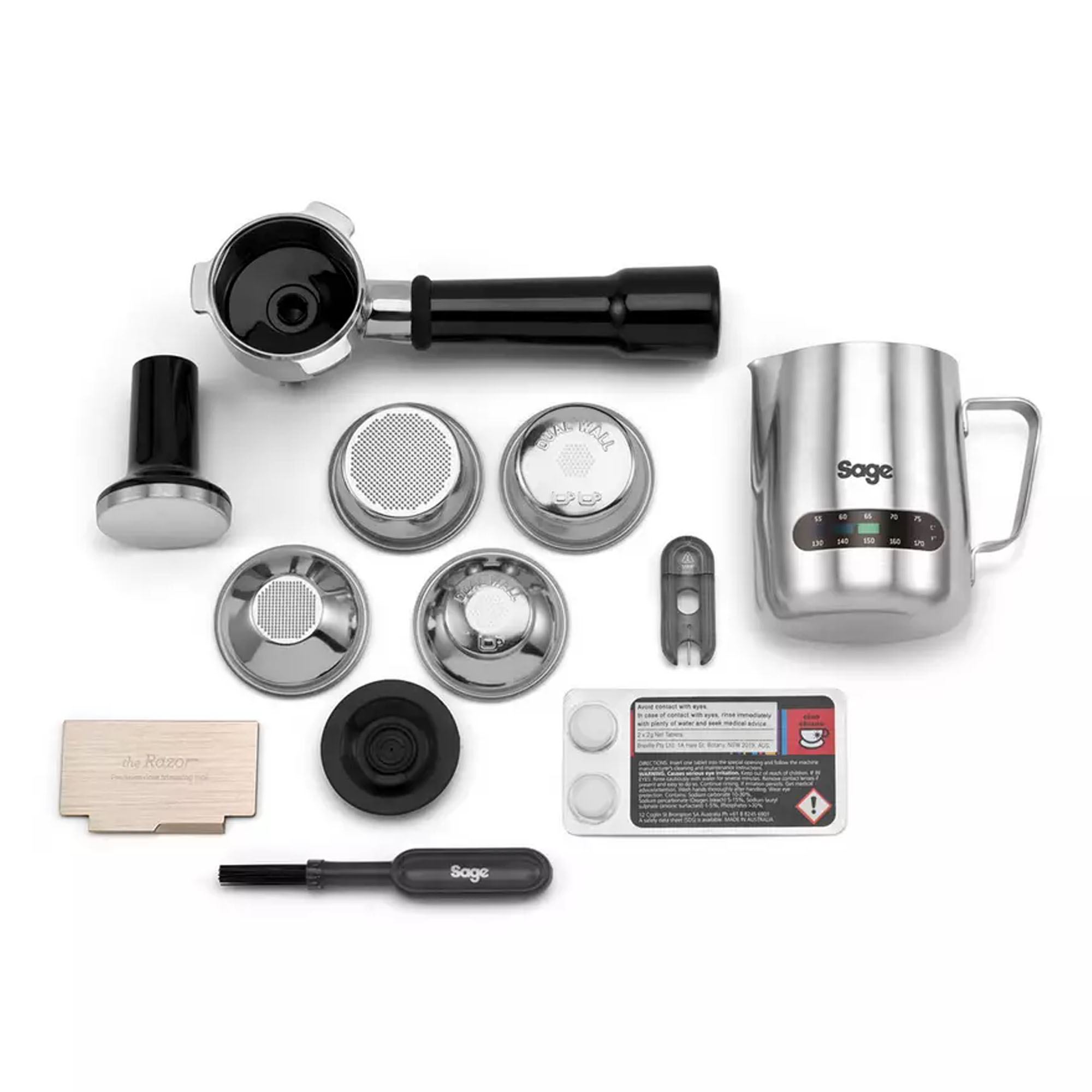
Grinding
The Sage The Barista Express BES875UK Espresso Coffee Machine has 16 grind settings that you can adjust by turning the wheel on the lefthand side of the coffee machine.
That's less than some comparable coffee machines – for example, the Breville Barista Signature Espresso Machine offers 30 grind settings – but still enough to enable most users to grind their favourite beans to perfection.
As Sage states 'the grind size will affect the rate of water flow through the coffee in the filter basket and the flavour of the espresso', so this is the stage where you're going to need to do a little fine-tuning to get things right.
Sage suggests starting off at setting 8 on the grind dial – mid-way between fine and coarse – and then adjusting as required.
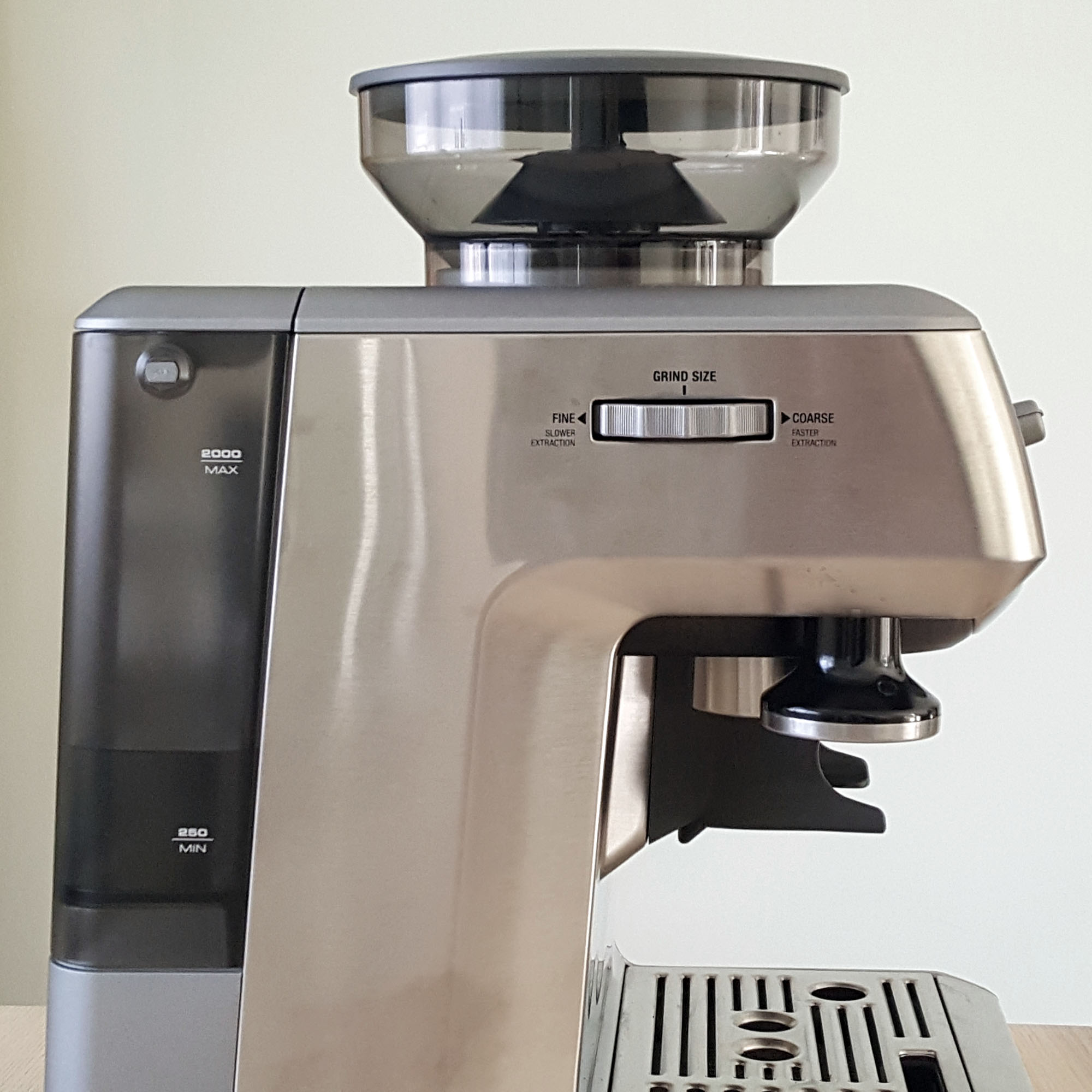
Dosing
From what I could work out, the Barista Express offers three ways to control your dose size.
First, you need to decide if you want a single or double espresso and insert the correct filter basket into the portafilter.
It's worth noting that this task is easier said than done because the filter baskets are a tight squeeze, and I found inserting and removing the filter baskets from the portafilter very tricky. I needed to use a knife to prize them out of the portafilter after use, although hopefully, they might become a slightly looser fit with repeated use.
You can then press the Filter Size button on the front of the coffee machine to let the Barista Express know which size shot you require.
Pushing and releasing the portafilter activates the Automatic Dosing function, at which point the Barista Express should grind the perfect amount of coffee beans to fill the filter basket.
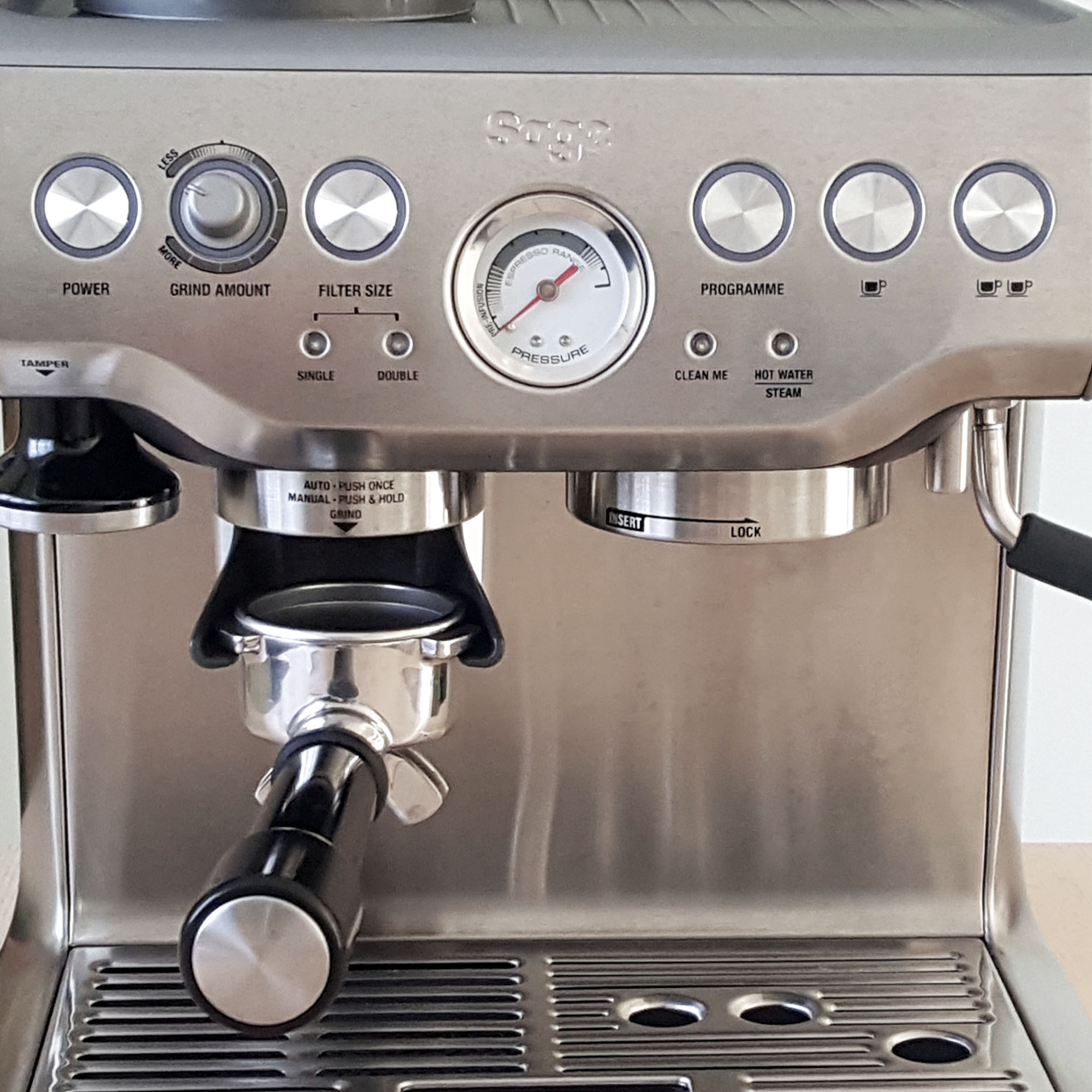
In practice, to begin with, I often found this meant the filter basket was full to overflowing with coffee grounds. At which point I assume you're meant to use the Grind Amount wheel on the front of the Barista Express to fine-tune the dosing amount – the instructions are a little unclear on this – toggling the wheel between 'less' and 'more'.
Having to manually adjust the Grind Amount wheel seemed to be at odds with the idea of automatic dosing, and made getting the right amount of grinds in the filter basket tricky to judge the first few uses leading to a lot of wastage. I ended up leaving the Grind Amount set to its lowest level, although I imagine if you prefer a finer grind you might find you can fit a little more ground coffee into the basket.
In comparison, the Breville Barista Signature Espresso Machine made this process super simple – especially for a fairly novice barista, like me – with its automatic dosing system seemingly taking into account the grind coarseness and dispensing the perfect amount of grinds each time. Clearly, the Sage Barista Express was going to take me a little more work to master. After all, Sage does refer to this as a 'hands-on' machine.
Alternatively, you can opt for manual dosing. To do this you push in the portafilter and then hold it until you get the dose you prefer. Releasing the portafilter then disengages the grind.
Over time, I daresay eyeballing the grind amount is something that becomes very intuitive, but fresh out of the box you might need to give yourself time to learn the Sage Barista Express' ways. There's also a bit of noise to adjust to, with the grinder issuing quite a high pitched noise whilst its grinding.
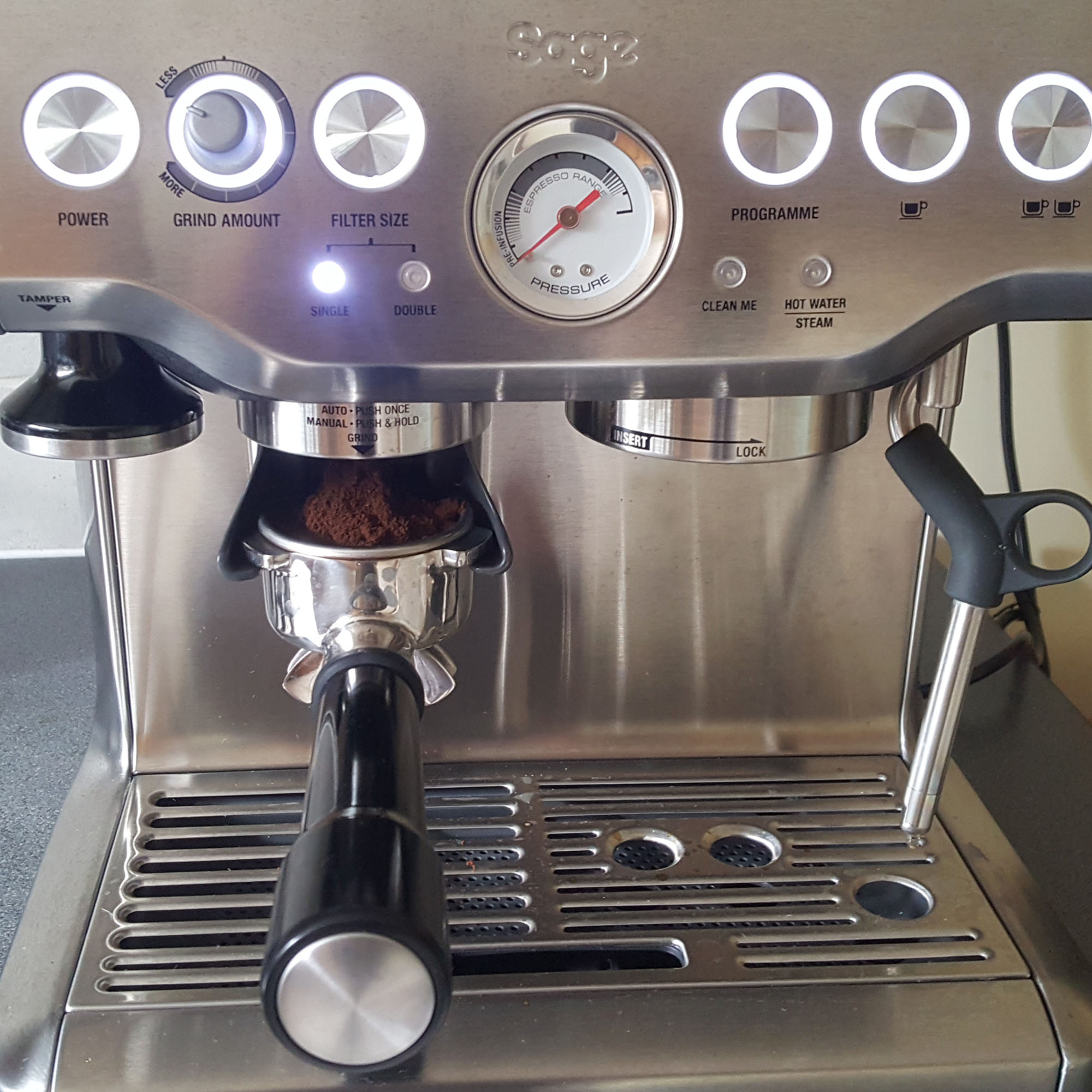
Tamping
The Sage Barista Express requires manual tamping and comes with a stainless steel tamper that slots into a magnetic holder by the side of the grind outlet when not in use – a great design feature so that the tamper doesn't get lost.
The tamper isn't the weightiest I've used and it's not the most ergonomically shaped, so I didn't find it as enjoyable to use as some, but it does do the job OK.
The Barista Express also comes equipped with 'The Razor'. Sage describes this as a 'precision dose trimming tool' that allows you to 'trim the puck to the right level for a consistent extraction'.
And this is where things start to get a little messy. Even when set to the lowest grind amount, the Sage Barista Express' filter baskets are still quite small, and when using the automatic dose function I regularly found I had far more grinds in the filter basket than I needed.
'The Razor' enables you to swivel the (blunt) blade to remove excess grounds, but that means a lot of waste for each grind. And, there isn't really anywhere for those grounds to go when you rotate the razor in the portafilter. The brand suggests emptying them into a knock box, although there isn't one supplied. Tilting the portafilter on its side to sweep out the excess grinds is also easier said than done, so things can quickly get quite messy if you take that approach.
This isn't an unsolvable problem as you can use the Manual Dose function and eyeball how much coffee is dispensed instead, but it does make the Automatic Dosing feature less useful than it should really be.
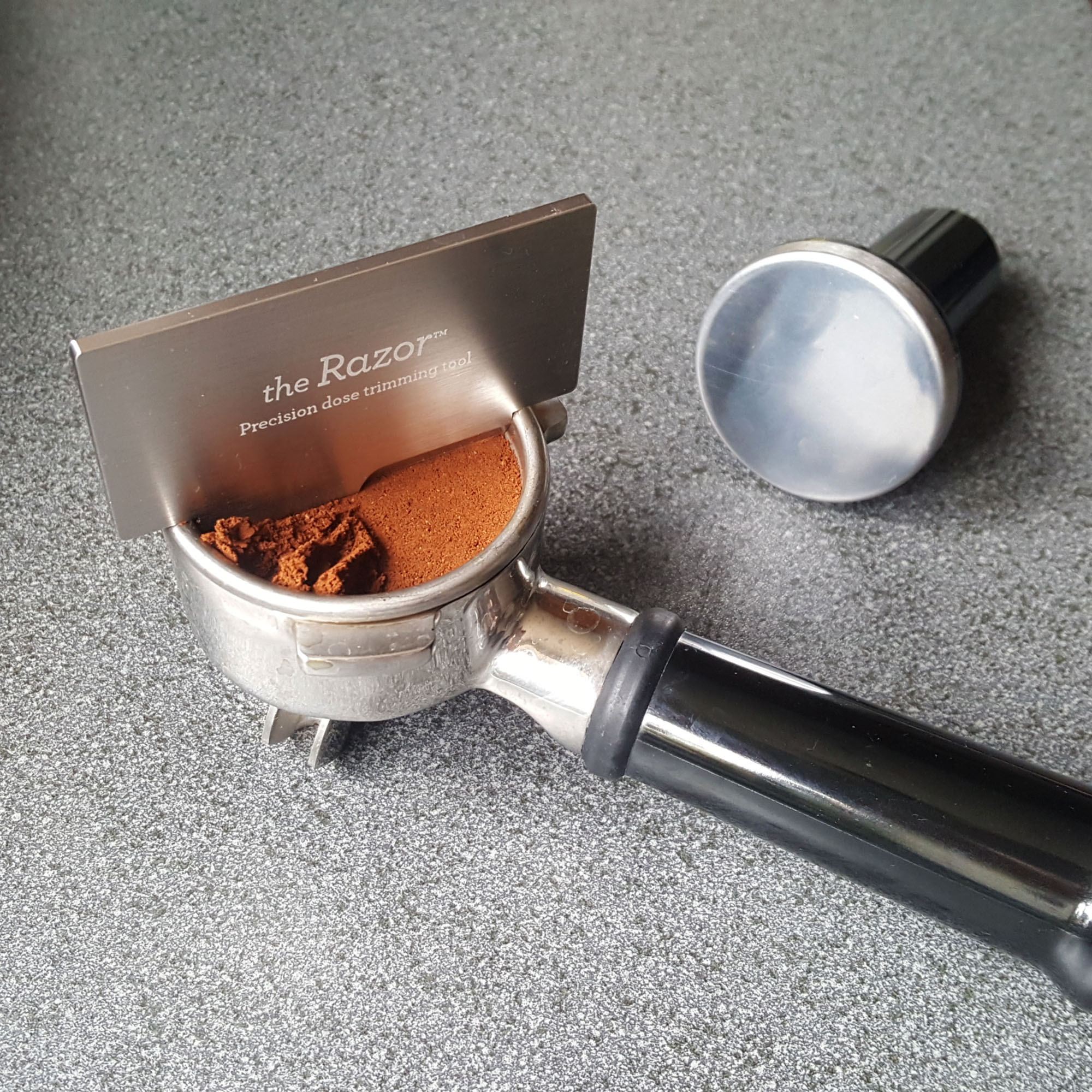
Extraction
To extract your coffee you then need to slide the tamped portafilter into the group head on the right of the machine and twist the portafilter's handle to the right to get it into position. You can choose to extract one or two cups at once, as well as opting for a manual shot volume.
Extraction is the point where you'll find out if your grind size, dose volume and tamping hit the mark to create the perfect cup of coffee. Get it wrong and you'll either under or over-extract the espresso which will leave a bitter taste in your mouth... literally. Get it right and you'll have a rich-tasting coffee with a golden brown crema.
On the Sage Barista Express the way to tell how close you are to the perfect extraction is via the traditional-look pressure gauge on the front of the machine. This has a needle that will start to lift as the group head extracts, ideally hitting the mid-way point of the grey section.
And, it only took a little tweaking to get the Barista Express dispensing great coffee, with a smooth, velvety texture.
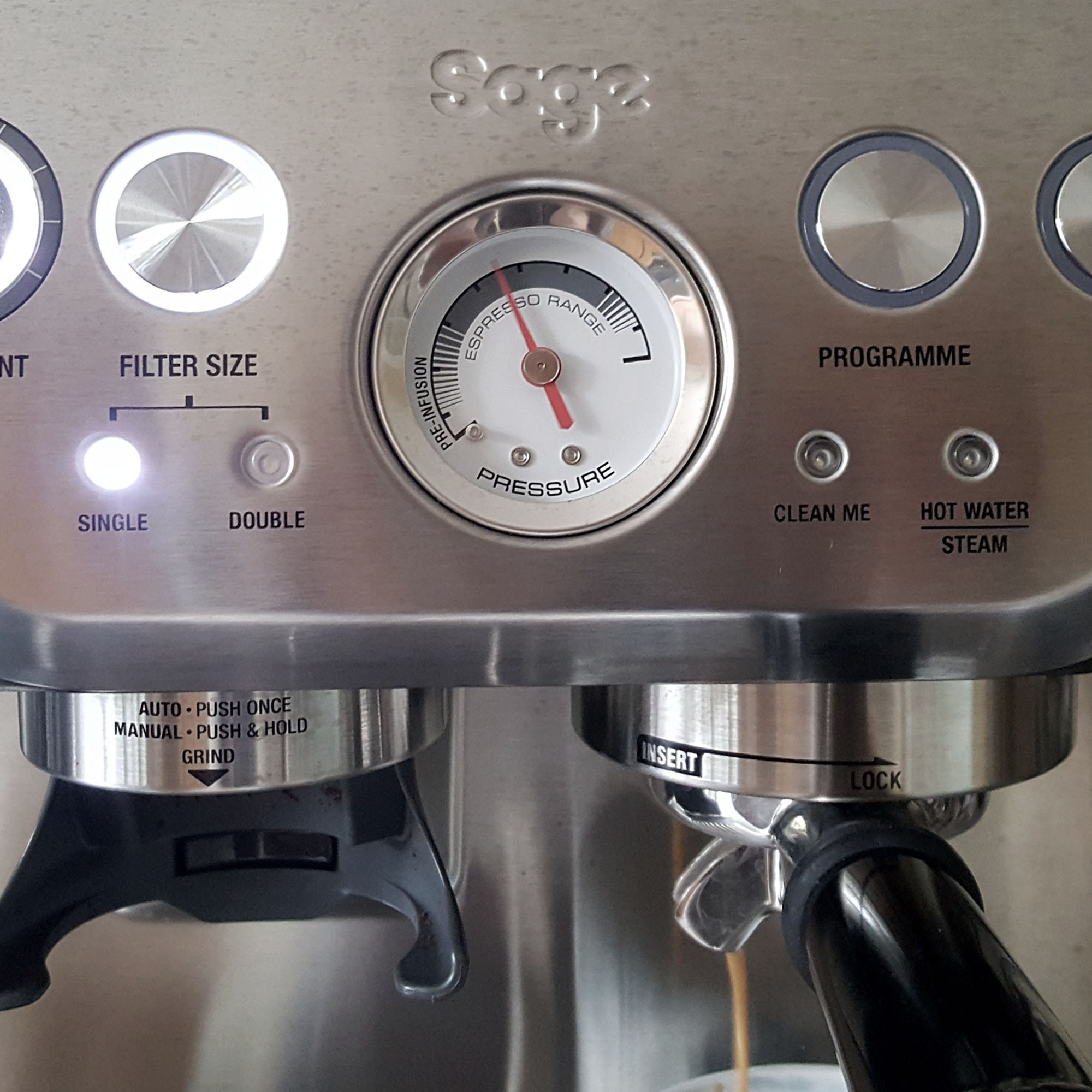
There's also the option to dispense hot water via the dial on the righthand side of the coffee machine if you want to create a longer drink.
The Sage Barista Express also offers an 'Advanced Temperature Mode' whereby you can increase or decrease the dispensing water temperature in 1°c intervals to customise your brew further.
Milk frothing
The Barista Express comes equipped with a built-in milk frother so you can froth up your chosen milk to create a cappuccino or latte.
Positioned on the right-hand side of the coffee machine, the frother itself has a really nice movement and is very flexible to adjust.
Unlike the Breville Barista Signature where you can dispense your espresso at the same time as steaming your milk, the Sage Barista Express requires you to linger a little longer over your coffee making and do things separately. The steamer takes a few seconds to heat up – which is accompanied by quite a loud knocking noise – and then starts hissing out water vapour to froth the milk.
All in all, the steam wand did a great job at creating microfoam, and those with more skill than me should have no problem using it to hone their latte art skills.
The decision to place the on/off dial for the steamer on the right-hand side of the coffee machine rather than on the front is less of a plus point, making turning the steamer off after use a little awkward.
The Sage Barista is also a little noisy at this stage, with quite a lot of gurgling and hissing and steam emitted from under the drip tray as the steam function deactivates.
However, the built-in temperature indicator on the stainless steel milk jug is a really great feature, allowing you to get your milk to just the right degree of warmth as you froth.
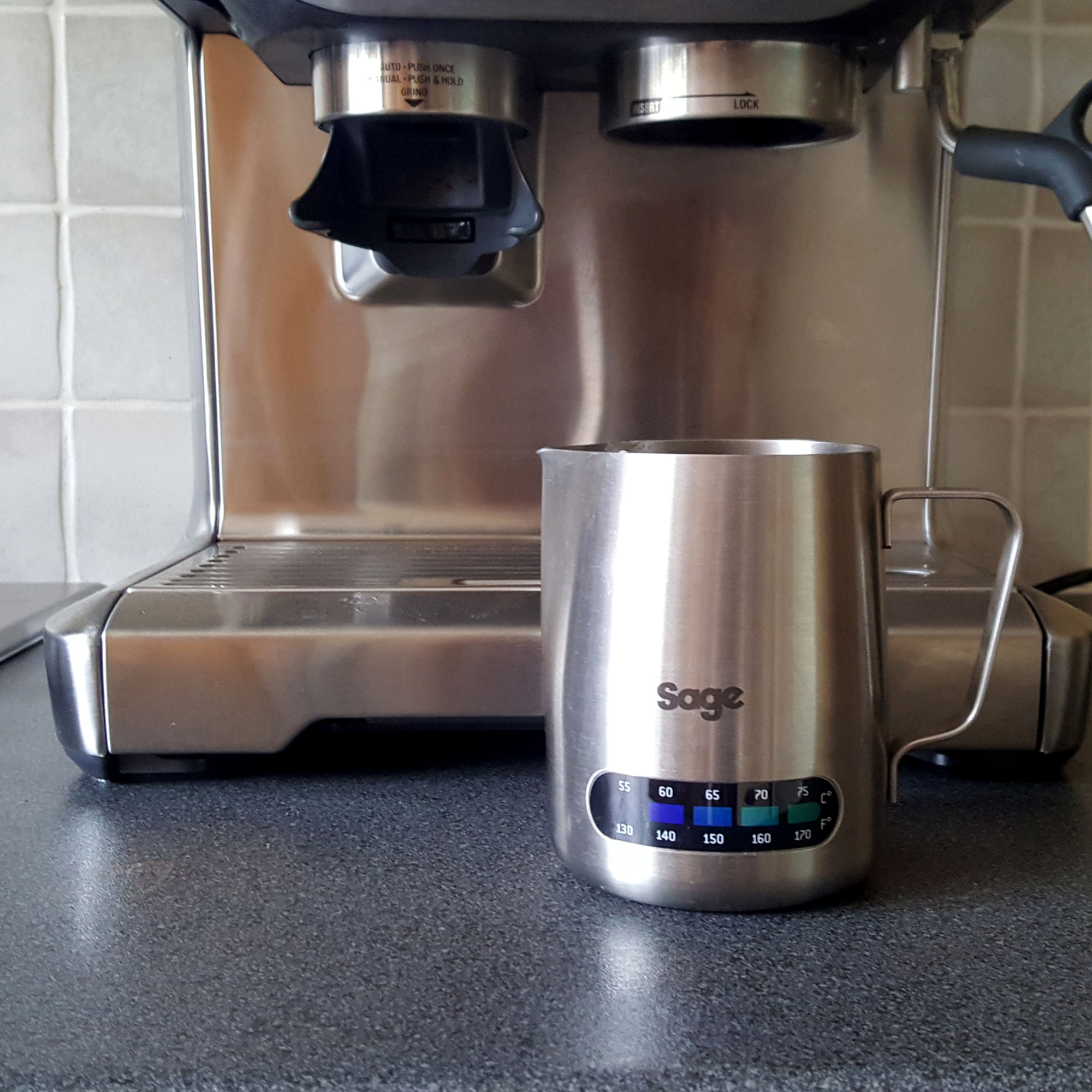
Other functionality
If you really want to fine tune your brew then the Sage Barista Express also offers the ability to adjust the upper burr of the grinder to achieve your ideal extraction.
Cleaning
Compared to the super neat and tidy Breville Barista Signature Espresso Machine I'm used to using, I did find the Sage The Barista Express BES875UK Espresso Coffee Machine was a little messier to operate in comparison.
The Breville Barista Signature features an anti-static drip tray that ingeniously seems to mean coffee grounds stay in place and never gravitate onto the work surface, but this wasn't quite the case with the Sage.
The Breville can sometimes feel a little clinical, but the Sage Barista is a much more hands-on experience to use, and that means both making and cleaning up after making your coffee is a little more of a labour of love.
I found I needed to wipe down the Barista Express' drip tray after each use because of the machine's tendency to drip, splash, or release coffee grounds, and its stainless steel body was prone to attracting finger marks. But, all in all, nothing a little TLC couldn't fix.
Emptying the drip tray is also easy enough. Handily, the drip tray features a clever yellow 'flag' that rises as the water level in the drip tray does to alert you when the drip tray needs emptying.
Behind the drip tray, there's also a useful hidden storage box where all the Barista Express' cleaning tools can be stashed.
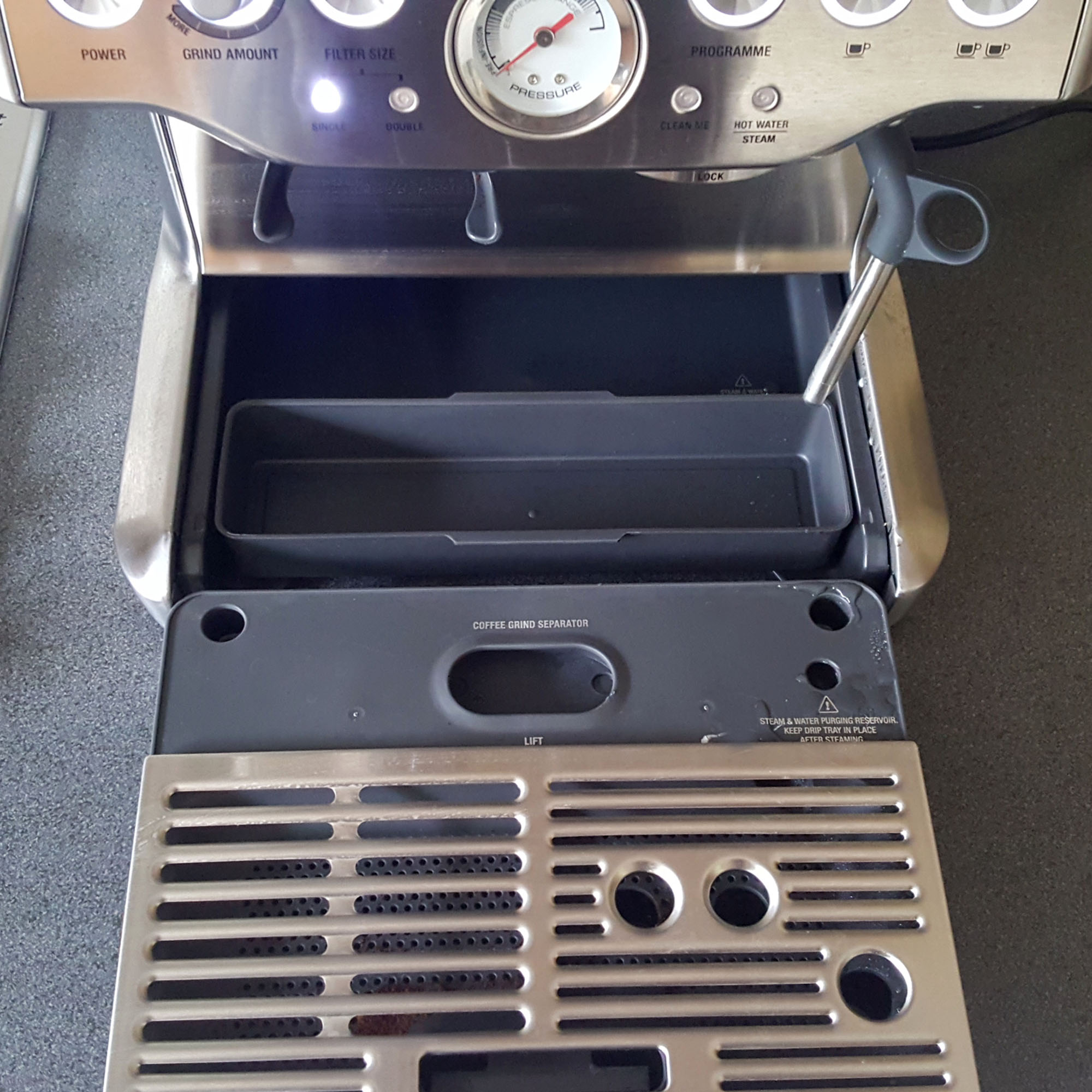
Verdict
From the moment I unboxed it, I loved the way the Sage Barista Express looked. This is a classic bean-to-cup coffee machine with a statement stainless steel body, traditional pressure gauge, and curvaceous lines that look great on the kitchen worktop.
However, you are going to need to put in a little work to learn its ways. All in all this feels like exactly what Sage describes it as, a 'hands-on' coffee machine. You need to put in a little effort to figure out its grind and dispensing quirks, and you're going to be a little more hands-on with the trimming razor and clean-up.
Those who want to dive deep into the ritual of bean-to-cup will likely love the more interactive experience and savour the opportunity to tweak and fine-tune their brew. Others may prefer a slightly faster and more efficient bean-to-cup machine that can create the perfect cup of coffee with as minimal thought and mess as possible.
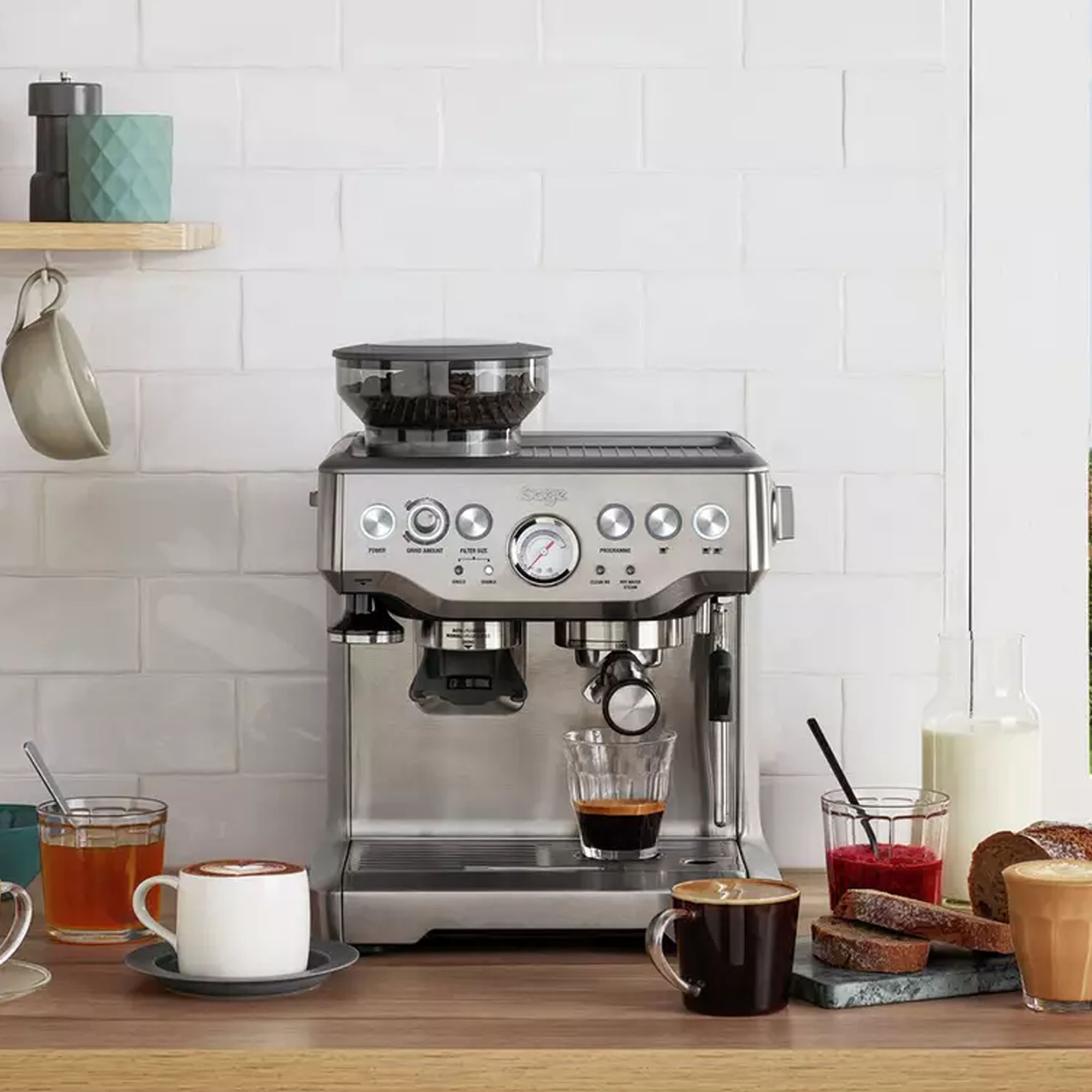
I found its grinding and extraction a little noisier than the Breville Barista Signature Espresso Machine – so if, like me, you're someone who prefers the morning to be silent until the caffeine has hit, you might find the Sage a little more intrusive first thing. It also requires a tad more patience to let its steamer warm up before you can get frothing.
I also found the filter baskets awkward to remove from portafilter and thought the automatic dosing feature could be more... automatic.
However, there's no denying that the Sage Barista Express makes a great cup of coffee. A little tweaking and a few quirks aside, the Barista Express reliably extacted espresso with a smooth, velvety texture, rich taste, and golden brown crema that could rival that of my favourite coffee shops. Exactly what you want from a bean-to-cup machine.
The Barista Express also looks super stylish, has enough customisable settings to keep the coffee aficionado happy tinkering, and is easy enough for an amateur to master... with a little patience. It also comes with lots of useful accessories.
Overall, I don't think you'll be disappointed if you invest in this machine. Especially if you want a bean-to-cup coffee machine that looks like the real deal on the kitchen worktop, and delivers the real deal in terms of taste and caffeine hit.
Get the Ideal Home Newsletter
Sign up to our newsletter for style and decor inspiration, house makeovers, project advice and more.

Amy is Ideal Home’s Sleep Editor and the Ideal Home Certified Expert on Sleep. She's spent the last four years researching and writing about what makes for the best night’s sleep during the day and testing out sleep products to find the best-in-class by night. So far she’s clocked up over 10,000 hours of pillow, duvet, and mattress testing experience.
Our go-to for all things sleep-related, she’s slept on and under bestselling products from Simba, Emma, Hypnos, Tempur, Silentnight, Panda, and many many more.
As a hot sleeper, Amy is always on the lookout for the most breathable bedding, but she also leads a wider team of testers to ensure our product testing encompasses both hot sleepers, cold sleepers, front sleepers, back sleepers, side sleepers, and everything in-between.
-
 Zoe Ball's colourful kitchen island shows how easy it is to create a characterful cooking space - here's how she did it
Zoe Ball's colourful kitchen island shows how easy it is to create a characterful cooking space - here's how she did itBeing brave with colour will reap huge rewards
By Holly Cockburn
-
 George Home’s sold-out striped parasol is finally back in stock - but this elegant design is expected to sell out again fast
George Home’s sold-out striped parasol is finally back in stock - but this elegant design is expected to sell out again fastI can't get enough of its whimsical design, too
By Kezia Reynolds
-
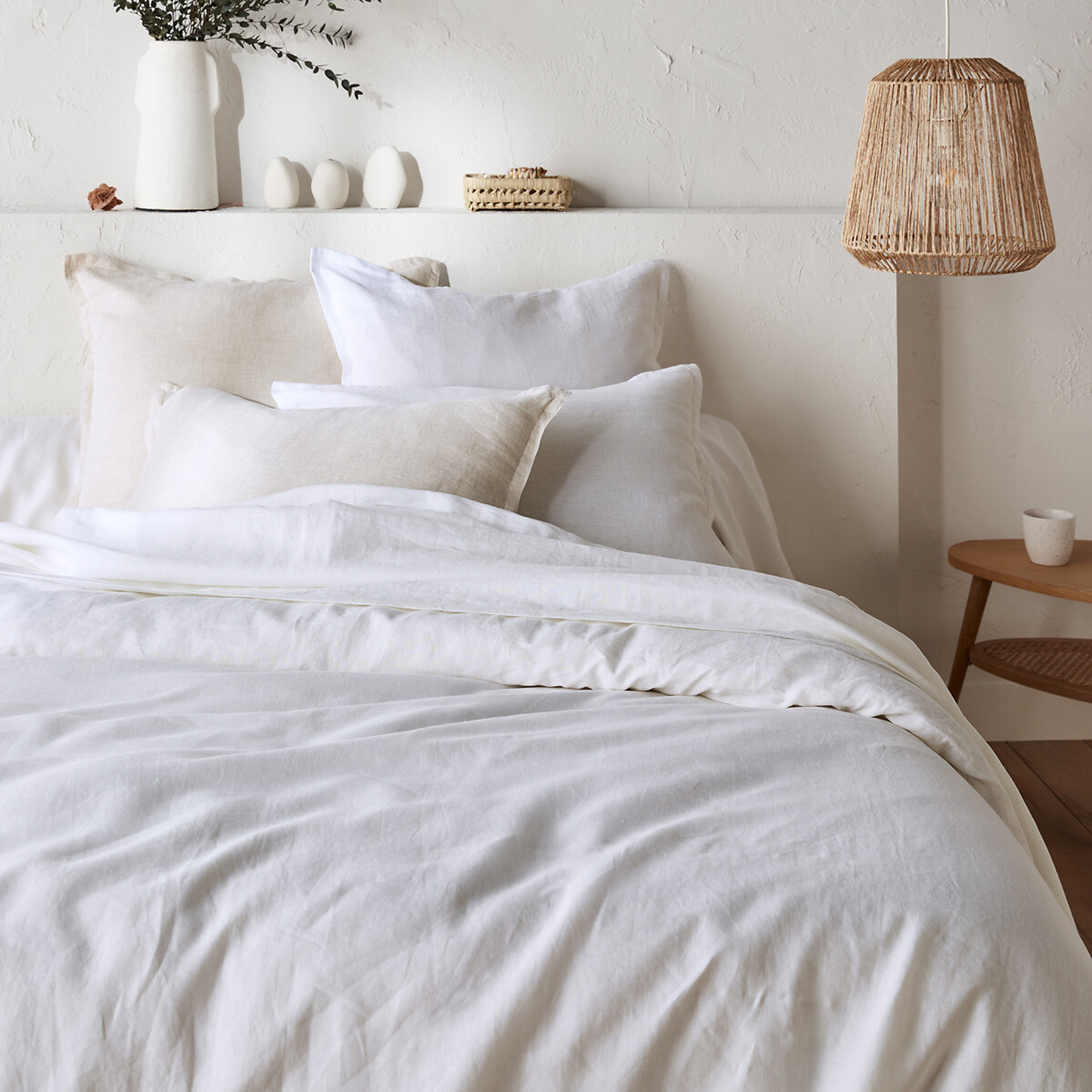 'I've now bought 3 different colours' – my favourite affordable linen bedding is currently half-price, and the 5-star reviews speak for themselves
'I've now bought 3 different colours' – my favourite affordable linen bedding is currently half-price, and the 5-star reviews speak for themselvesThe half-price linen bedding that owners can't stop raving about
By Amy Lockwood